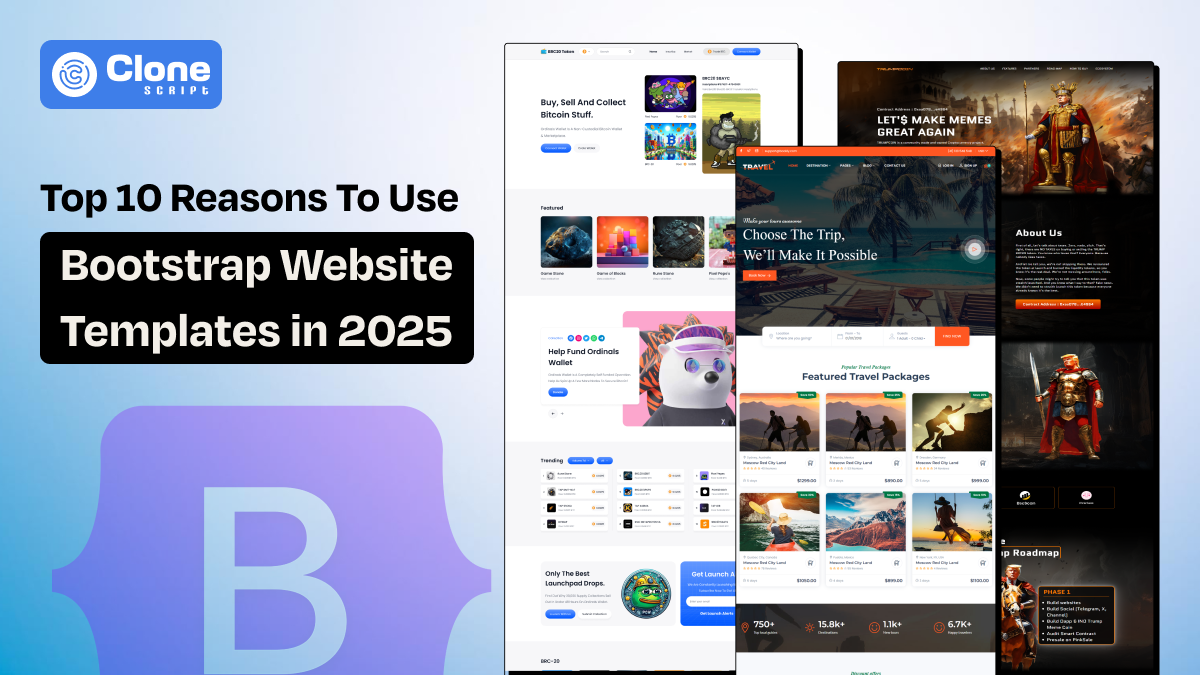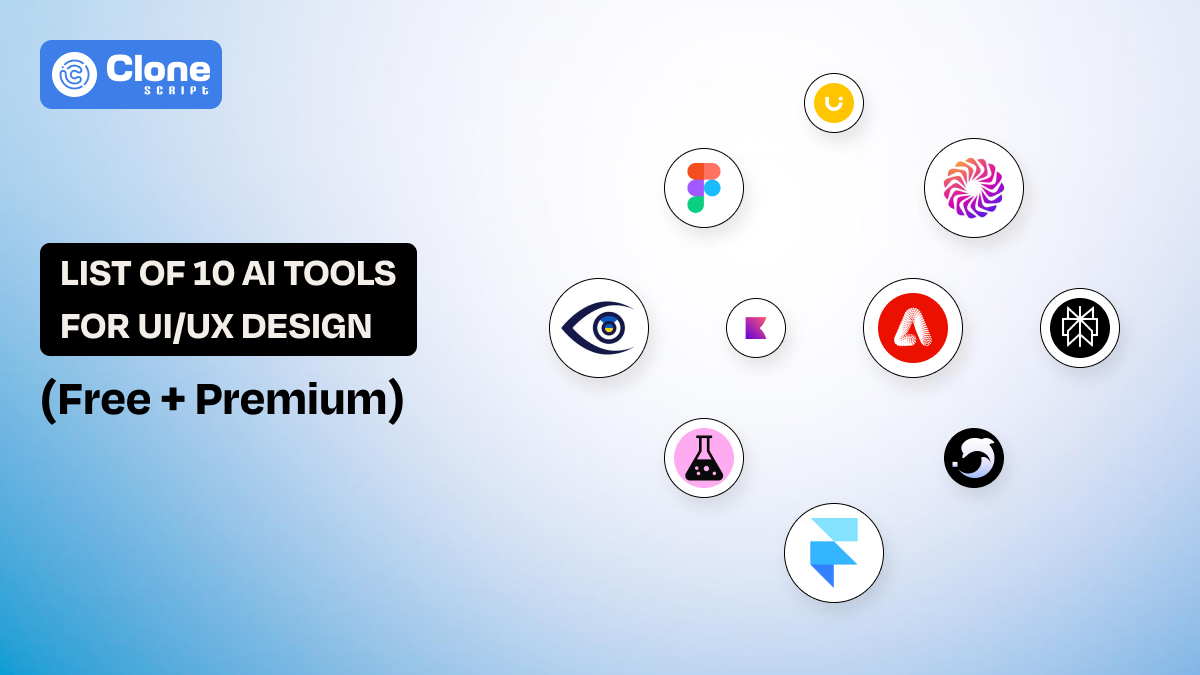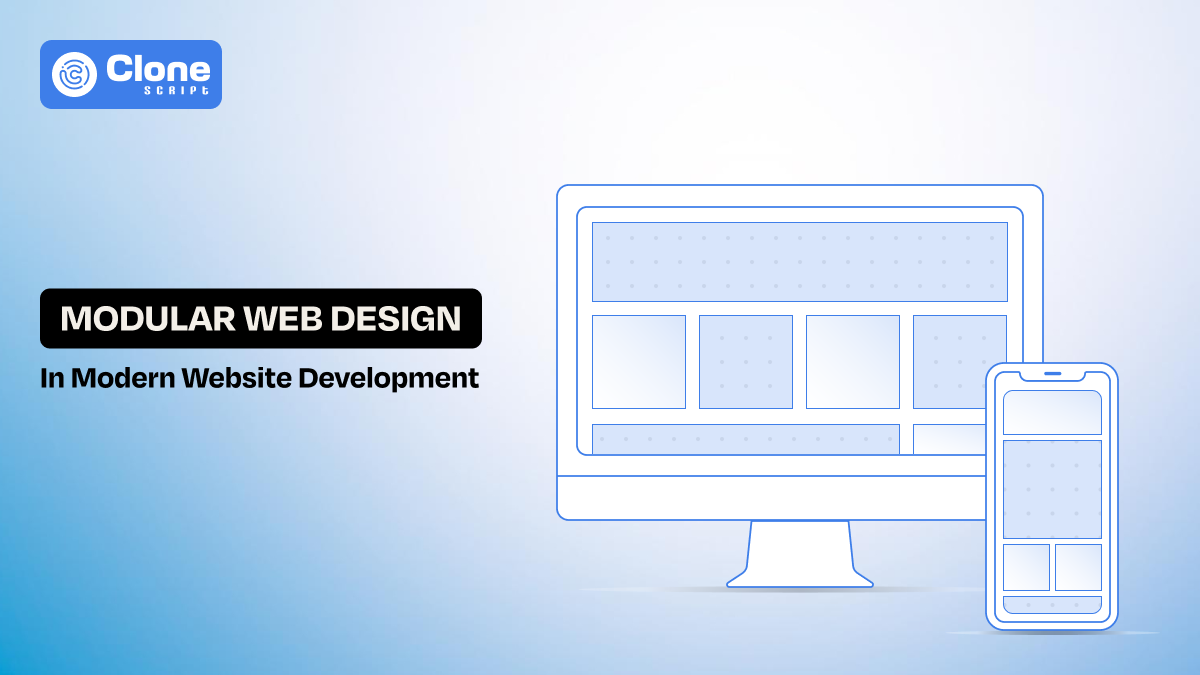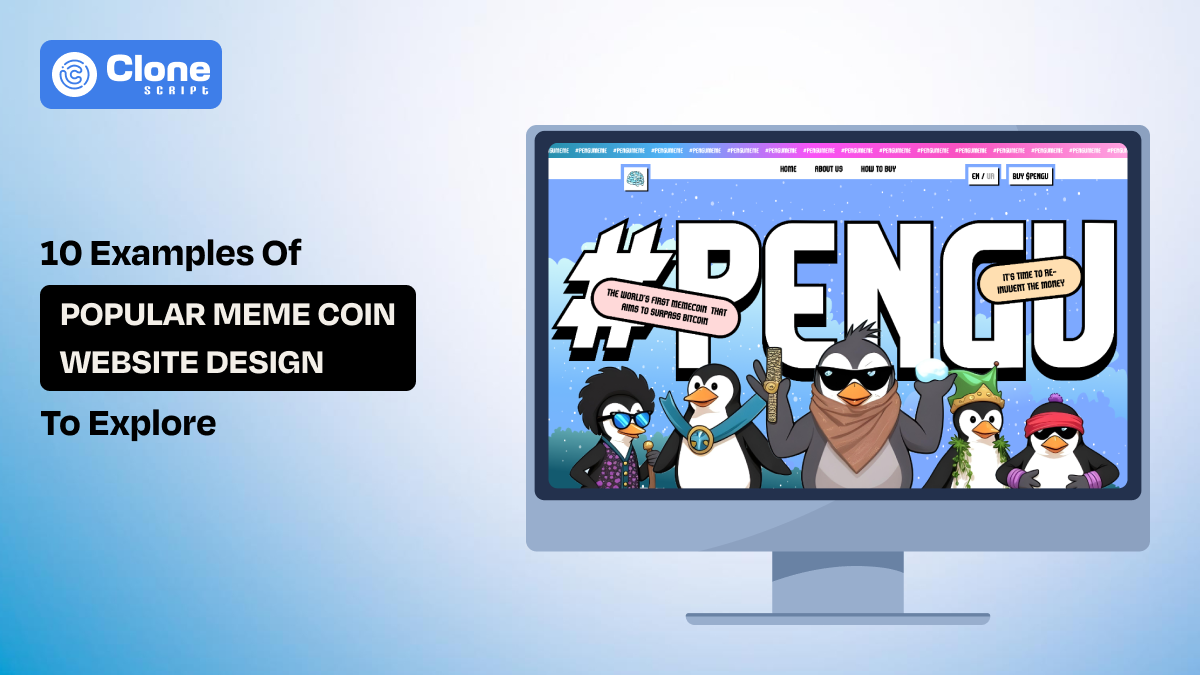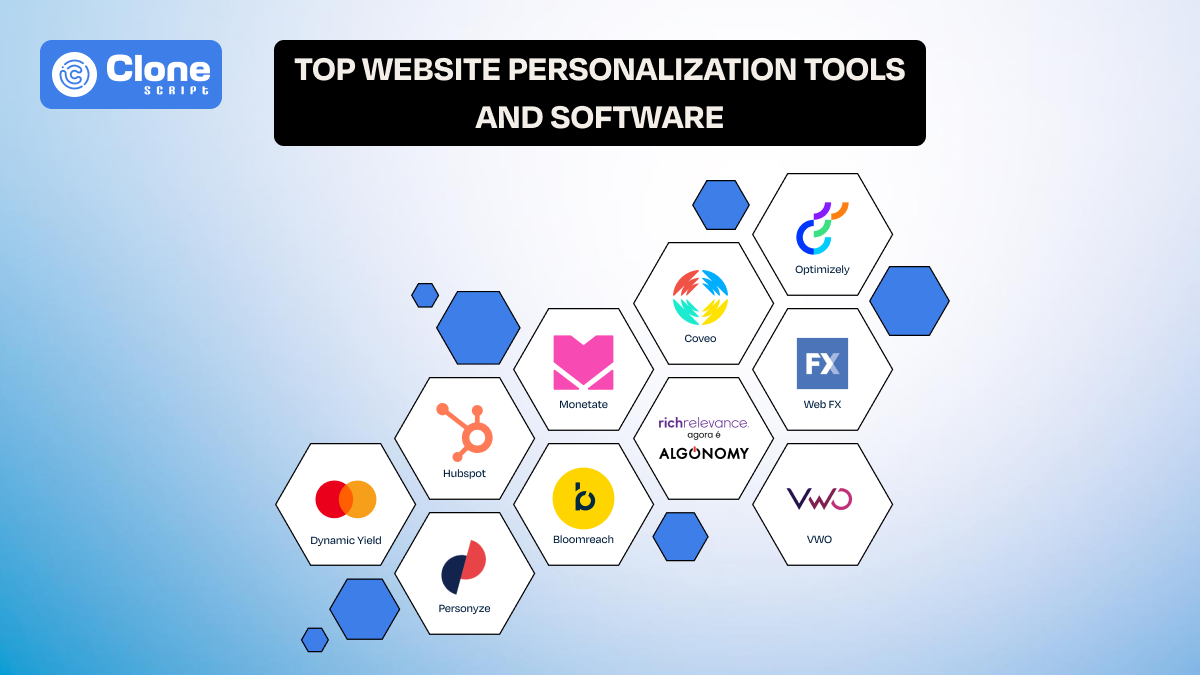Top 10 Reasons to Use Bootstrap Website Templates in 2025
Web development in 2025 is no longer about writing every line of code by hand. It's about using intelligent systems, composable UI components, and frameworks that accelerate outcomes without sacrificing scalability. With the importance of speed, design quality, and maintainability lies an underrated tool: Bootstrap website templates.
Forget the outdated assumptions. Bootstrap in 2025 is not bloated. It's not visually rigid. It’s a modern, developer-friendly frontend system, and the templates built with it are far more than placeholders. They are starting points for modern, responsive, production-grade websites.
Whether you're building a SaaS dashboard, a marketing website, or a startup MVP, using a Bootstrap site template is a strategic advantage. Let’s understand the reasons behind the acceptance of these website templates.
1. Faster Development Time = Lower Burn Rate
In early-stage projects, time is survival. Bootstrap templates cut development time by 60–80%, especially in frontend-heavy builds. But the real value isn’t just “faster delivery.” It’s faster validation.
-
Launch MVPs in days, not months.
-
Replace weeks of frontend wireframing with live UI code.
-
Iterate visually before backend APIs are even ready.
This isn’t about lazy development. It’s about reducing time-to-feedback, which directly correlates with lower iteration costs and faster product-market fit.
Using HTML and CSS website templates that follow Bootstrap conventions also means developers can onboard faster. There is no need to learn obscure design systems or invent utility classes on the fly.
2. Fully Responsive Design: True Mobile-First, Not Mobile-After
A quick audit of many "responsive" templates reveals a secret: most are desktop-first designs awkwardly inappropriate to mobile. Bootstrap isn’t built like that.
Its templates follow genuine mobile-first logic, meaning layouts scale up from small screens, not the other way around. This ensures:
-
Logical content flow on smartphones.
-
Efficient use of limited viewport space.
-
Tap-first interaction models, not click-first.
In 2025, when 70% of global web traffic is mobile, this isn’t a nice-to-have. It’s a requirement baked into Bootstrap’s functionality, and to prefers a mobile-friendly template.
Look beyond buzzwords like “responsive HTML website templates” and understand that Bootstrap templates are layout systems, not just styled divs.
3. Cross-Browser Compatibility: One Less Nightmare
Every browser works differently. Safari 17 doesn’t always behave like Chrome. Edge might still interpret some flex properties differently. Debugging those issues across a large layout is frustrating.
Bootstrap templates are tested across major rendering engines, Blink, WebKit, and Gecko, by a global open-source community and core team. This includes:
-
Consistent behavior for flexbox and grid.
-
Fallbacks for unsupported CSS features.
-
Safe patterns for forms, buttons, and navbars.
With Bootstrap, you're not testing if your site works in Firefox; you're testing how well it performs.
This level of predictability turns Bootstrap website themes into assets for teams that want to create confidently across devices and browsers.
4. SEO Friendly Structure: Semantic HTML5 Structure
Bootstrap templates look good and they’re structurally sound. In 2025, SEO isn't about keyword stuffing. It’s about semantic clarity, performance, and mobile-friendliness. Bootstrap templates are offered by default.
-
Clean HTML5 structure: It includes the main, header, section, and footer tags for better web page readability
-
Built-in accessibility roles: Helps with screen readers and structured data parsing, enhancing the chances of a better user experience.
-
Page speed optimization: Most templates come with compressed assets and minimized dependencies. To improve web page rank in search results, website speed optimization is the right way.
So instead of pushing SEO into your code, you’re starting with a framework that anticipates search engine behavior. It is a significant edge for content-heavy sites or startups relying on organic reach.
5. Enterprise-Level Design Patterns, Without the Overhead
Many startups and SMBs want enterprise-level UIs like dashboards, analytics pages, account settings, modals, collapsibles, etc. Bootstrap website templates abstract all of these components into clean, well-structured HTML/CSS/JS modules.
These aren’t just pretty buttons. You get:
-
Forms with validation logic.
-
Navs that handle multilevel structures and dropdowns.
-
Complex layouts like sidebars, accordions, tabs, and cards that don’t break on resize.
Most importantly, these components are modular. You can remove, reuse, or re-style them without unpicking a spaghetti mess of inline CSS.
This is particularly proper for those building tools with dynamic data. Bootstrap’s layout resilience under data stress is a huge operational win.
6. Bootstrap 5: Finally, No More jQuery
The Bootstrap of 2025 is a completely different beast. The migration to Bootstrap 5 removed jQuery as a dependency, a long-awaited change that opens the door to modern JS workflows.
Now, Bootstrap templates can do:
-
Use native JavaScript, making them lightweight and framework-agnostic.
-
Integrate cleanly into modern stacks (Vue, React, Next.js, etc.).
-
Work with module bundlers like Vite, Webpack, and Parcel without extra hacks.
This means you can use a Bootstrap template in HTML5 as your design foundation, then enhance with JavaScript logic suited to your stack, without fearing about user experience.
7. Design Tokenization for Branding at Scale
One of the overlooked strengths of Bootstrap templates is how easily they adapt to brand guidelines.
Thanks to SCSS variables and utility APIs, you can:
-
Change color schemes globally in seconds.
-
Customize spacing, typography, or button shapes system-wide.
-
Create themed versions of a product without rewriting core styles.
Unlike traditional HTML website design templates, Bootstrap lets you scale branding across multiple white-labeled sites or apps. It is crucial for SaaS platforms and agencies.
The best part? These customizations are documented and easy for distributed teams to collaborate on consistent UIs.
8. Cost-Efficiency That Doesn’t Trade Off Quality
A high-end Bootstrap template might cost $49. That may seem minor until you realize what it's replacing:
-
Weeks of frontend design and coding.
-
Thousands of UI/UX resources.
-
Endless QA for layout bugs.
When you use HTML web templates that are built with Bootstrap, you’re paying for battle-tested, commercial-grade UI logic. These templates are helpful:
-
Used by thousands of developers.
-
Maintained with updates for years.
-
Built with scalability in mind, not just visual aesthetics.
This makes them ideal not just for MVPs, but for post-launch scaling, too. You don’t need to “replace” them later; you build on them.
9. Framework-Agnostic, Developer-Friendly Workflows
Here’s the practical truth: not every team uses the same stack.
Some prefer React. Others swear by Laravel, Flask, or even raw PHP.
Bootstrap templates respect this diversity. They’re agnostic by design.
You can do with these templates:
-
Drop them into monolithic CMS platforms like WordPress.
-
Convert into JSX components for React/Next.js.
-
Integrate into Django or Flask templates with minimal refactoring.
Why? Because Bootstrap separates concerns cleanly: HTML, CSS, and JavaScript are modular and logically grouped. Unlike many other HTML5 themes that break when moved, Bootstrap templates travel well between stacks.
For developers dealing with multi-product ecosystems, this is a huge bonus.
10. Ready for Any Industry, Without Compromise
While Bootstrap itself is a general-purpose framework, the ecosystem around it has evolved.
Today, you’ll find templates tuned for:
-
Healthcare portals with appointment forms and HIPAA considerations.
-
Fintech apps with secure login flows and financial UI elements.
-
eCommerce layouts with cart logic, product grids, and filter panels.
-
Education sites with course dashboards and student interfaces.
-
SaaS onboarding flows with pricing tables, CTAs, and testimonials.
These aren’t surface-level skins. They reflect real UX design logic, backed by Bootstrap’s foundational grid and component system. Whether you’re building for finance, media, retail, or public sector, there's a Bootstrap template that gives you a 70% start with no visual compromise.
Conclusion
The front-end isn’t just a “view layer” anymore. It’s where brand, usability, performance, and accessibility converge. In this environment, Bootstrap website templates are more than convenient. They’re:
-
Architecturally sound.
-
Developer-efficient.
-
SEO-optimized.
-
Design-system aware.
-
Stack-neutral.
In a world where teams are dedicated, timelines are tight, and users expect premium design, Bootstrap templates serve as infrastructure, not decoration.
If your goal is to launch faster, scale without rework, and create interfaces that don’t break under pressure, this framework gives you the foundation you need.
Don’t start from scratch when the hard work’s already been done and done well.
Explore the Best and Modern Website Templates.
FAQs
-
Are Bootstrap website templates still relevant in 2025?
Bootstrap 5 has modernized its architecture, dropped legacy dependencies like jQuery, and offers responsive, accessible, and scalable UI frameworks used by startups and enterprises alike.
-
What industries can use Bootstrap HTML templates?
Bootstrap templates are built for versatility, like finance, healthcare, education, SaaS, eCommerce, and portfolios. Many are even pre-optimized for industry-specific UX patterns.
-
Can I customize Bootstrap templates without breaking things?
Yes. Bootstrap templates use modular SCSS variables, utility classes, and clean HTML structure, allowing you to theme and rebrand easily without impacting structural integrity.
-
Is Bootstrap better than Tailwind for templates?
Bootstrap offers more out-of-the-box components, while Tailwind gives you atomic control. For rapid development with visual consistency, Bootstrap templates are generally more practical for small teams or solo devs.
-
Where can I get high-quality Bootstrap website design templates?
Platforms like AllCloneScript, ThemeForest, and Creative-Tim offer premium Bootstrap 5 templates optimized for commercial use and long-term scalability.
 BTC - Bitcoin
BTC - Bitcoin
 USDTERC20 - USDT ERC20
USDTERC20 - USDT ERC20
 ETH - Ethereum
ETH - Ethereum
 BNB - Binance
BNB - Binance
 BCH - Bitcoin Cash
BCH - Bitcoin Cash
 DOGE - Dogecoin
DOGE - Dogecoin
 TRX - TRON
TRX - TRON
 USDTTRC20 - USD TRC20
USDTTRC20 - USD TRC20
 LTC - LiteCoin
LTC - LiteCoin

